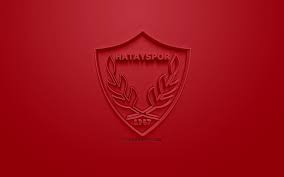San Siro, also known as Stadio Giuseppe Meazza, is a remarkable feat of engineering and architecture that stands as an emblem of Milan’s rich football heritage. Designed by architects Ulisse Stacchini, the stadium was inaugurated in 1926 and has since undergone numerous renovations and expansions to maintain its grandeur. Its unique architecture incorporates a blend of functionality and aesthetic appeal, making it one of the most recognizable stadiums in the world.
One of San Siro’s most distinguishing features is its iconic design, characterized by its distinct “bowl” shape. This configuration not only provides excellent sightlines from every seat but also contributes to an electric atmosphere on match days. The interlocking concrete and steel structure, which supports the grand stands, showcases innovation typical of early 20th-century architecture, while elements such as the iconic red and black fa‡ade pay homage to the two clubs that call San Siro home—AC Milan and Inter Milan.
Moreover, the stadium has a seating capacity of over 75,000, making it one of the largest in Europe. This vast expanse allows for the hosting of large-scale events, resulting in memorable nights that resonate in the hearts of the fans. The tiered seating arrangement, combined with excellent acoustics, fosters a vibrant atmosphere that elevates the experience of football matches into an unparalleled spectacle. The grandeur of San Siro is not just in its size but in how it actively engages the spectators, drawing them into the pulsating heart of the game.
A Historical Journey San Siro
San Siro’s architecture tells a rich narrative of the evolution of football and design methodologies over the decades. The original structure was straightforward, primarily aimed at accommodating crowds while providing basic amenities. However, as football grew in popularity, the need for more sophisticated facilities became clear. This led to several renovations, each aiming to enhance the spectator experience while maintaining the stadium’s historic character 79sodo.
In the late 1980s and early 90s, significant renovations added crucial modern amenities, including new seating, luxury boxes, and improved catering facilities. These updates allowed the stadium not only to host football matches but also concerts and sporting events, thus expanding its utility. The 1990 FIFA World Cup served as a critical juncture for San Siro, prompting further renovations that emphasized the blending of historical elements with modern design. Architects focused on ensuring that even as the stadium was updated, its essential character and connection to the city were preserved.
The architectural legacy of San Siro was further solidified when it was recognized as a historical monument in 2011. This status highlights the importance of not merely viewing the stadium as a physical structure but as a cultural artifact embodying the legacy of football in Milan. The growth of the stadium reflects the evolution of society’s approach toward sports infrastructure, emphasizing the need for adaptable spaces that resonate with both tradition and modern-day requirements.
Innovations for the Modern Era
In consideration of its historical stature, any updates to San Siro are approached with a commitment to innovation while honoring its legacy. The forthcoming developments promise to integrate modern technology without compromising the integrity of the stadium’s design. Features such as eco-friendly energy solutions, advanced telecommunications, and fan engagement platforms are among the proposals on the table for redevelopment.
One of the most exciting prospects includes the implementation of advanced structural engineering solutions to enhance safety and accessibility. This could involve updating exit strategies, installing state-of-the-art surveillance systems, and incorporating barrier-free designs for those with disabilities. Ensuring that San Siro embraces inclusivity is vital—not only for compliance with modern standards but to encourage a diverse fanbase to enjoy the thrill of live football together.
Moreover, virtual and augmented reality experiences are being considered for integration to deepen fan interaction within the stadium. These innovations can recreate the thrill of pivotal match moments, allowing fans to relive historical matches or simulate participation in live events. Such features can redefine how spectators engage with the game and with each other, promising to transform the live football experience into something more immersive and integral.
The Emotional Resonance of San Siro
San Siro transcends its physical presence to symbolize a multitude of emotions for its devoted fans. Home to two of Italy’s most storied football clubs, AC Milan and Inter Milan, its hallowed grounds have seen countless triumphs and heart-wrenching defeats. This emotional resonance stems not only from the shared joy of victories but the collective sorrow of losses endured shoulder to shoulder with fellow supporters—a bond that weaves through generations.
On match days, the atmosphere inside San Siro is electric, a manifestation of passion that moves beyond the game. Chants echo, colors swirl, and the collective anticipation creates an almost palpable pulse within the arena. This is where memories are forged and life-long connections are made. The moment fans enter the stadium, they become part of a larger narrative, intertwining their hopes and dreams with those of their team, a unique experience that ignites a sense of belonging.
In times of adversity, the stadium has often served as a refuge for the city’s inhabitants. Major events, whether they be memorials or celebrations, often take place within its walls, transforming it into a symbol of unity. The emotional gravity of these moments resonates deeply within the Milanese community, proving that San Siro is much more than a venue to watch football—it’s a space where the city’s heart beats strongest.
Conclusion
San Siro encapsulates Milan’s enduring passion for football through its stunning architecture, rich history, and emotional significance. The stadium is not merely a venue but rather a cultural landmark that has evolved and adapted through time, reflecting the vibrant spirit of its community. With future redevelopment on the horizon, San Siro promises to embrace modern innovations while preserving its storied past, ensuring it remains a beloved temple of sport and a profound symbol of Milanese pride for generations to come.





